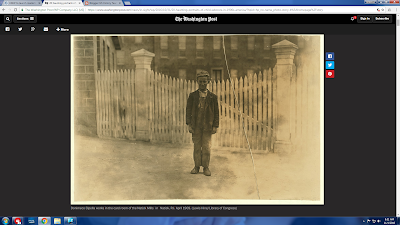My students take quizzes in class on their smartphones. How's that working out so far?
One goal this year has been to take advantage of the fact that the most powerful computers in our classroom reside in my students' cellphones. Almost all my students have them, and when they don't have them they either share with a classmate or I give them one of personal devices (my iPad or Chromebook) or a school computer. So far this year I've used cell phones to deliver instruction, teach digital citizenship, and help my students get organized, conduct research, collaborate, and practice and review. I've also used it to assess.
As part of my assessment, I deliver my reading quizzes with
Quia. Quia is an online testing program. There are other quiz platforms but I've used Quia for years and think it's terrific.
So far I've been very satisfied with the results. Students take quizzes on their devices and get instant results. The program double-randomizes each question, so each student gets questions presented in a different order, and the answer choices for each question are scrambled as well. I can easily modify questions so that different sections see different questions. And when students are absent from class I can easily set up a quiz for them to take. Quia generates data-analysis reports so that I can see areas where my students struggle, and can then remediate accordingly. Finally, the actual time I need to set aside for test administration is reduced because there is no time wasted passing out and returning paper quizzes.
What I really like most about Quia is that it adapts to my review strategy. I've been doing a lot of reading about "retrieval learning" (also known as the "testing effect") published by
Purdue University's Cognition and Learning Lab. They have shown how testing can be used as a study and review tool, in addition to an assessment tool. So I give my students lots of review quizzes. Here's my workflow: After students have taken a quiz, I change the settings on the quiz so that it shows answers. Then I move it into an "Unlocked Quizzes" folder on Blackboard. The expectation is that students will study for review quizzes by practicing with the quizzes in this folder. Once moved to the Unlocked Quizzes folder, these quizzes are fair game at any time.
One obvious question is test security. Students discussing test questions from one period to another is a concern with any type of test, but with these cell phone quizzes I address the issue in several ways. I discuss that one part of digital citizenship is respecting our school's Honor Code, which prohibits receiving or giving unauthorized assistance. Students also must take quizzes in class, keep their devices on their desks, and place them face down on their desks when they are finished. I make it a point to circulate through the classroom so that students know that I am monitoring their activity. I also weight quizzes differently: Each regular reading quiz (which is scheduled and announced) is worth 15 points, but review quizzes from the Unlocked Quizzes folder (which are not announced and assigned randomly from class to class) are worth 45 points.
Another concern is network reliability, so whenever a student's phone freezes, they simply stop the quiz and retake it at some other date for full credit.
So the mid-year verdict: Students seem to like the instant results and I like the ease, facility, and flexibility of smartphone quizzes.



































